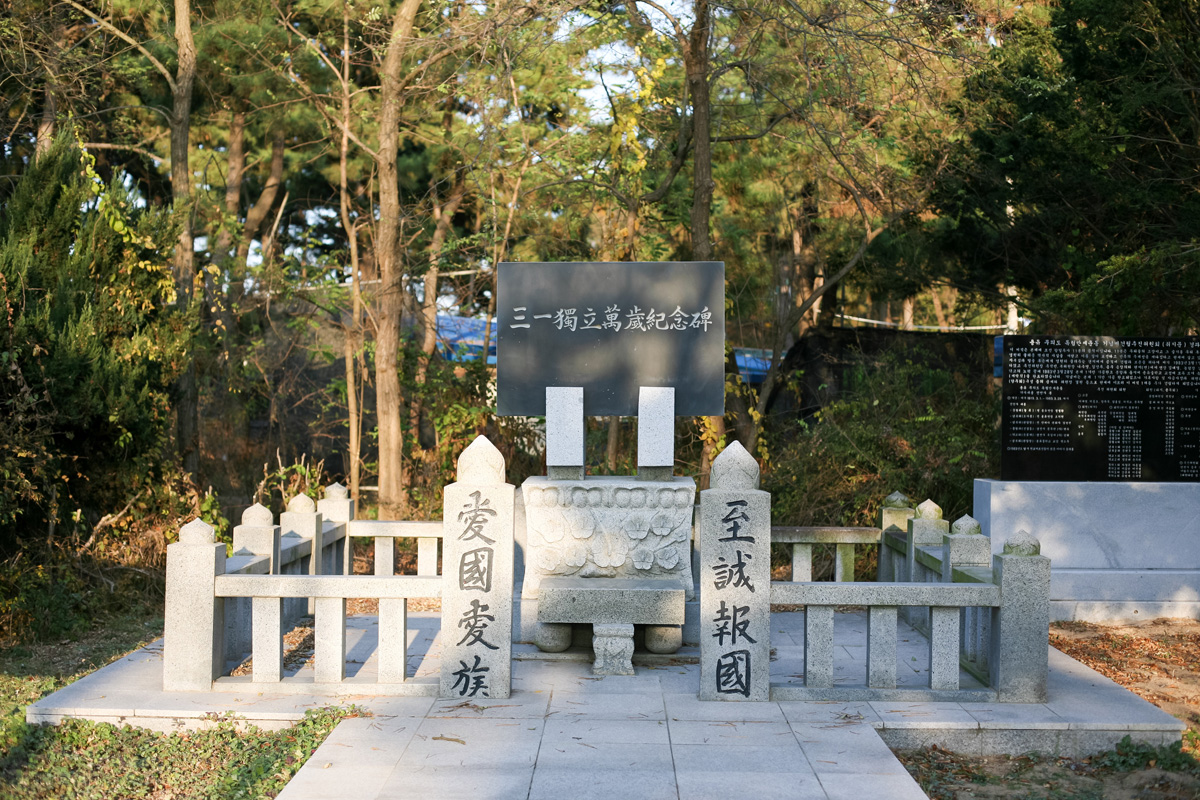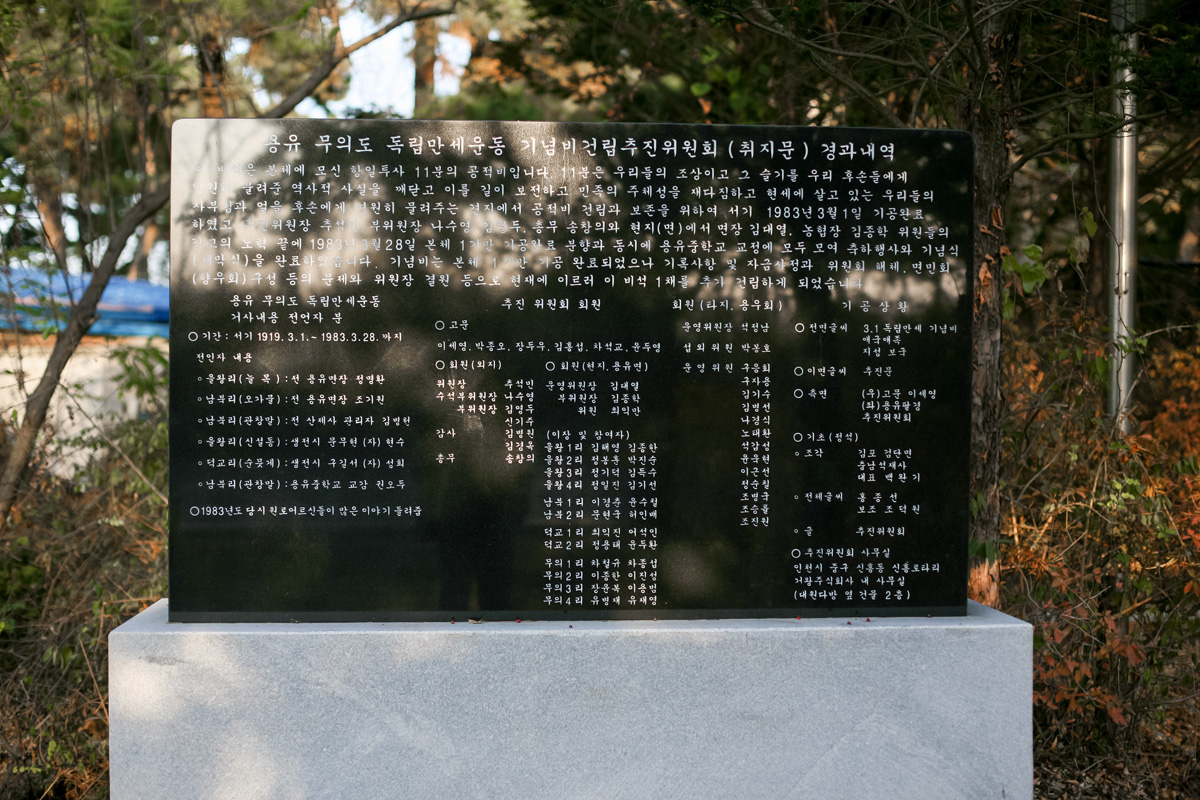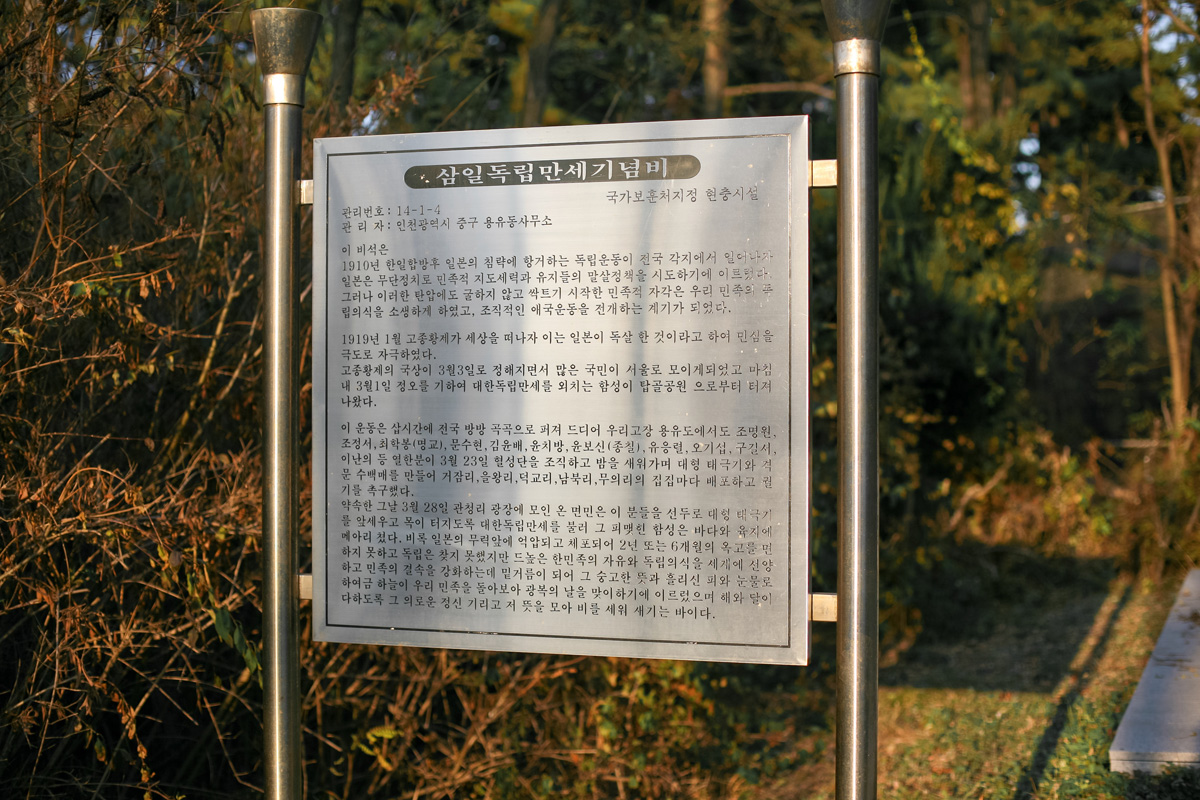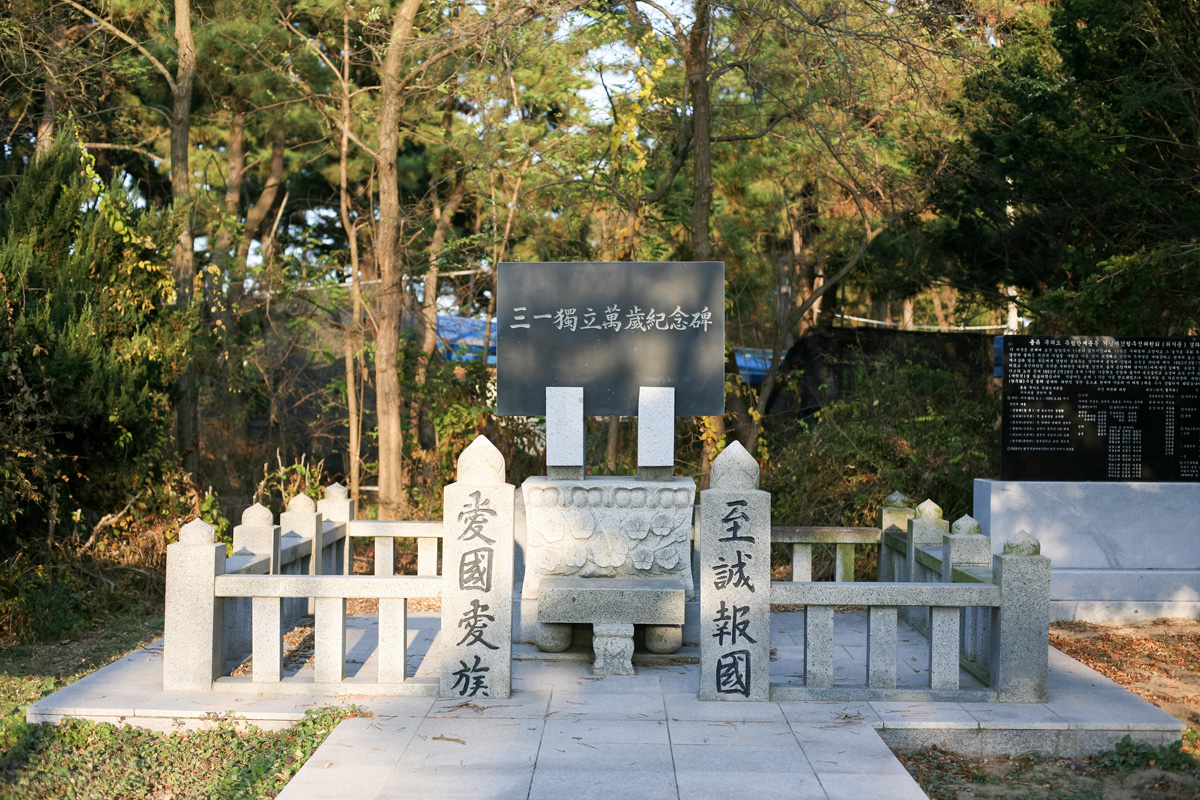3.1 National Independence Movement Monument
3.1 National Independence Movement Monument Yongyumyeon, where the cries for independence rang

On March 23rd and 24th of 1919, Jo Jong-seo, Mun Mu-hyeon, Choe Bong-hak and others who lived in Nambuk-ri, Yongyu-myeon and Bucheon-gun gathered at the house of Jo Myeong-won to plan the independence movement and formed a secret association called HyeolseongdanThey determined their plans for March 28, and made the Korean flag out of cotton.
At the same time, four people, including Jo Jung-seo, wrote about 80 letters inscribed with the words, "We will carry out the independence movement for Joseon so gather in the Gwancheong-ri plaza on the 28th'', and circulated them to each village.
At the same time, four people, including Jo Jung-seo, wrote about 80 letters inscribed with the words, "We will carry out the independence movement for Joseon so gather in the Gwancheong-ri plaza on the 28th'', and circulated them to each village.

On March 28th, four leaders and representatives of each district, Yun Chi-bang, Kim Yun-bae, Yun Bo-shin, Yu Ung-ryeol, Gu Gil-seo, O Gi-seop, gathered to declare independence in the Gwancheong-ri plaza.
Following this, 150 residents joined the movement, and using the Korean flag that they had previously prepared, they cried out for independence.
As a result of this protest, 11 people including Jo Myeong-won were arrested and spent time in prison.
This fact is found in records such as "Judgment of 11 people including Jo Myeong-won", "Judgment of 10 people including Jo Myeong-won", and 5 volumes of the "Independence Movement History Data Book".
Following this, 150 residents joined the movement, and using the Korean flag that they had previously prepared, they cried out for independence.
As a result of this protest, 11 people including Jo Myeong-won were arrested and spent time in prison.
This fact is found in records such as "Judgment of 11 people including Jo Myeong-won", "Judgment of 10 people including Jo Myeong-won", and 5 volumes of the "Independence Movement History Data Book".

At the entrance of the village, there is a monument to the independence movement.
In the past, there was a town office at the three-way intersection of the village, and the front of the town office was called Gwancheong-ri plaza, so you can check out the place that was used for the national independence demonstration.
Residents of Deokgyo-dong, Incheon, erected this monument on March 28, 1983 to commemorate the demonstration for national independence in Yongyu-myeon.
The height of the foundation is 1.5 m, and the height of the monument is 2.9 m.
In the past, there was a town office at the three-way intersection of the village, and the front of the town office was called Gwancheong-ri plaza, so you can check out the place that was used for the national independence demonstration.
Residents of Deokgyo-dong, Incheon, erected this monument on March 28, 1983 to commemorate the demonstration for national independence in Yongyu-myeon.
The height of the foundation is 1.5 m, and the height of the monument is 2.9 m.

- Location
- 4, Nambuk-ro 87 beon-gil, Jung-gu, Incheon
- Transportation
- <Local Bus> Take Bus No. 202 or 306 and get off at Deokgyo Intersection


